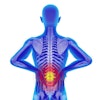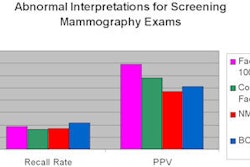If e-mail is added to the delivery methods for alerting referring physicians to important findings in radiology reports, will clinicians find the service useful? If clinicians working in eastern Massachusetts are representative, the answer is yes, according to an article to be published in the September issue of Radiology.
In January 2005, Massachusetts General Hospital in Boston integrated an automated e-mail notification system with its RIS to alert referring physicians to important but nonurgent clinical findings. A research team of radiologists analyzed usage patterns for the first three years of the automated alert system's operation and reported its findings (Radiology, September 2009, Vol. 252:1, pp. 747-753).
Radiologists prepared a total of 1,540,254 diagnostic imaging reports during the three-year period. A total of 56,691 reports, or 3.7%, included several conditions deemed to be important but not urgent:
- Identification of pulmonary nodules
- Definitive abnormalities that were findings of a diagnosis requiring a nonurgent communication
- Abnormalities with unclear clinical importance
- Findings of pre-existing disease that increased in size or number
Of these, 93.3% were associated with patients of physicians who had e-mail addresses in the hospital's database.
When any of these four categories of abnormalities occurred, the interpreting radiologists added a notation that an e-mail should be sent, using a macro contained in the speech recognition system. The alert system regularly queries newly finalized reports in the RIS using structured-text query commands for the macro sentence, and when it identifies a report with the sentence, it automatically sends a notification message to the e-mail address of the notifying physician.
The e-mail message contains the patient's medical record number, the radiology accession number, and an embedded link to the report. This can be viewed directly if the message recipient is using a computer inside the hospital's firewall; otherwise, report viewing requires a security-protected login.
The e-mail system supplements standing orders by referring physicians to receive faxed reports, and radiologists may opt to telephone a physician to discuss these findings, lead author Dr. Hani Abujudeh told AuntMinnie.com in a telephone interview.
An automated quality assurance program verifies that all report entries containing an important-finding alert had e-mail alerts sent. Clerical staff monitors the logs and troubleshoots when e-mails do not reach their destination. During the survey years, 7.2% of e-mail alerts required clerical assistance, and only 0.5% of the e-mails transmitted did not reach their destination.
Using a random sample of 1,000 radiology reports that contained the alert, the researchers determined that two-thirds of the alerts were initiated by abdominal and thoracic radiologists. More than 37% included recommendations for additional imaging procedures, and more than half were generated after review of CT images.
Ultimately, 75% of all recipients opened the e-mails. Using a simple seven-question survey, the researchers requested feedback from directors of quality assurance in 26 departments at Massachusetts General Hospital. The majority of the respondents indicated that the e-mail alerts were useful to them and beneficial for patient care.
The research team did not investigate how the e-mails were utilized by the physicians who received them or whether these messages affected the clinical care provided and, ultimately, patient outcomes. Nor did the team evaluate whether patients for whom additional diagnostic imaging procedures were recommended actually had these procedures.
The researchers recommended that these issues be pursued in future investigations and that a cost-effectiveness study of the e-mail alert system be performed, Abujudeh told AuntMinnie.com.
By Cynthia E. Keen
AuntMinnie.com staff writer
August 26, 2009
Related Reading
Critical results software -- it's cheaper than settling lawsuits, June 5, 2009
New search tool finds needle in PACS haystack, May 1, 2009
PACS software tool boosts clinical follow-up, December 15, 2008
Using informatics to meet computer challenges, February 7, 2008
Communicating abnormal findings to clinicians may not ensure follow-up, November 28, 2007
Copyright © 2009 AuntMinnie.com



















